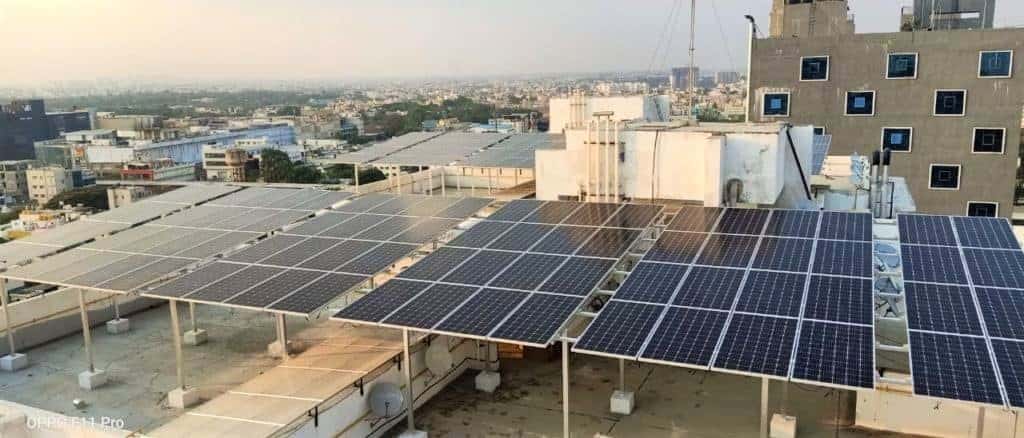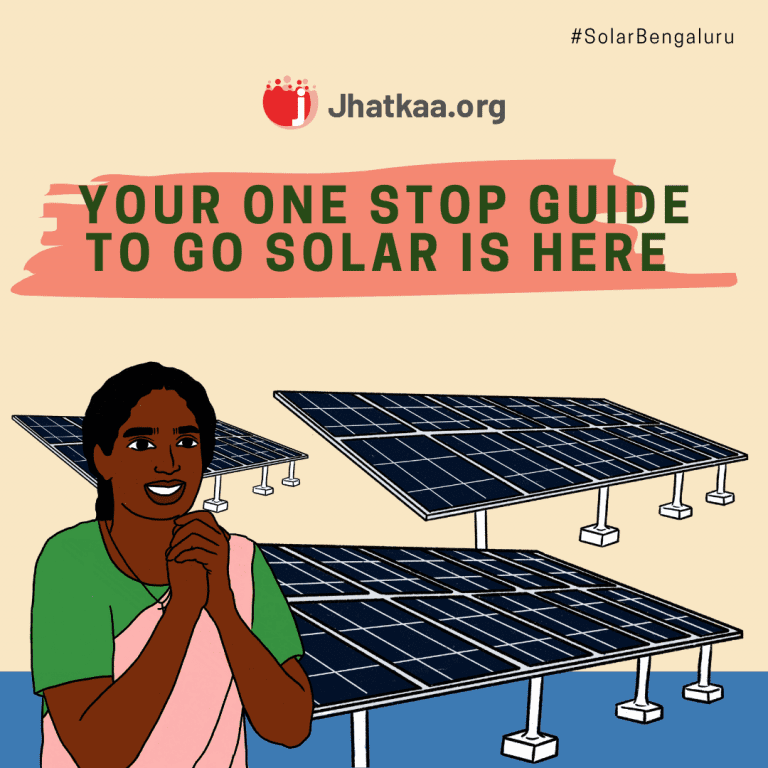At the COP26 climate summit in Glasgow on 7th November 2021, J R Bhatt, Adviser/Scientist in the Ministry of Environment, while presenting India’s third Biennial Update Report (BUR), referred to the significant uptake of its solar programme. India’s solar energy capacity has risen 17 times in the last seven years, currently standing at about 45 gigawatts. However, when one looks at the various targets set for the shift to solar, it becomes evident that there is still a long distance to be covered.
An independent analysis by the Council for Energy, Environment and Water (CEEW) had shown earlier that India’s total installed solar power capacity would need to increase to 5630 gigawatts (GW) if we were to commit to achieving net-zero carbon dioxide emissions by 2070.
Analysing the Prime Minister’s commitment at the Glasgow summit to increase India’s non-fossil energy capacity to 500 GW by 2030, a report from the Center for Science and Environment (CSE) cites a projection made by the Central Electricity Authority (CEA) for the country’s energy mix for 2030. According to the projections, India’s installed capacity of solar energy must rise to 280GW by 2030.
Clearly, there is significant ground to cover.
Steps in the right direction
There are, however, some developments that raise hope.
In the capital, the rapid transit Delhi Metro is close to sourcing 100 per cent of its power needs from its solar installations. It also receives surplus power from a 750 MW solar park based out of Madhya Pradesh — Rewa Ultra Mega Solar Limited, and its stride towards solarization will help the company save 41 crores.
Delhi government schools also present an encouraging picture. 150 of these schools have 21 MW of solar installations, enabling them to save Rs 8.8 crore and earn Rs 8.5 crore by selling surplus power annually. Both the entities, the Delhi Metro and the Delhi government schools, are following the RESCO Model, wherein the solar installation is owned and managed by a third party.
Gujarat, one of the first states to develop solar generation capacity, currently has an installed capacity of 4400+ MW. In 2018, the Gujarat government initiated the half-a-decade long process of installing 200 MW of solar rooftop on all of its six airports (owned by the Airports Authority of India).
In its solar power policy released in 2021, Gujarat sought to reduce the power costs of commercial and industrial units by half, and remove the cap on solar installations. It also proposed to purchase surplus power at a favourable rate per unit, which would lead to more savings for consumers.
In October 2021, reports indicated that Rajasthan had the highest number of solar installations, with up to 8.2 GW capacity. While there has been a drop in its solarization efforts in recent times, due to the pandemic and the overachievement of targets, it has commissioned a project to set up a 2000 MW installation in Bikaner District.
Read more: You too can build a sustainable home, just do as this former submariner did
Telangana’s solar footprint also seems to be widening. The nodal agency in the state for the adoption of Renewable Energy, TSREDCO (Telangana New and Renewable Energy Development Corporation), began installing solar rooftop panels on bus depots and traffic signals, which has helped the state’s transport body save Rs 4 crore annually. Hyderabad’s Rajiv Gandhi International Airport aims to meet 50% of its energy needs from solar, having enhanced capacity to 10 MW.
Rooftop solar in cities – The journey so far
While the country has made some progress in utility scale solar electricity targets, the adoption of rooftop solar in cities remains dismal. In 2017, the central Ministry of New and Renewable Energy had decided to install 40GW of rooftop solar (RTS) power by 2022 to meet its total targeted solar capacity of 100 GW, India could only install 6 GW till October 2021, thanks to COVID-related constraints.
With its minimal requirement of land, and negligible distribution losses, residential rooftop solar could have provided one of the easiest and surest paths in the shift towards renewable energy in cities. But patchy policy making has been an issue. The rules on solar installations, including those related to gross and net metering, differ from one state to another, and also from one DISCOM to another. Nationalised banks, despite receiving a green signal from the Government of India, remain reluctant to lend money for solar installations, since the resale value of such items is low. Such barriers are further compounded by the lack of consultations with the corporate sector, whenever the government makes important policy decisions; for example, the recent decision of the GST committee to increase the tax rate on photovoltaic cells’ components led to an unexpected increase in the pricing which led to a sharp fall in demand, hitting suppliers hard.
Take Bengaluru, for example. The Karnataka government set a target of 300 MW of solar rooftop installations on Bengaluru’s households. Some RWAs had shown interest, and one of them went on to commission a 354.4 KW solar plant installation, which has been touted as the largest installation in the residential sector. However, the installed capacity is nowhere close to the target, as only 140 MW of rooftop solar generation was commissioned as of September 2020.

A survey by BESCOM showed that rooftops of 1.4 lakh buildings in the city have the potential to generate 2500 MW of solar power, but lack of infrastructural capacity and bureaucratic hurdles have posed a major setback to the uptake of rooftop solar installations.
Read more: Why residential rooftop solar fails to take off in Bengaluru
In the city of Nagpur and other parts of Maharashtra, an investigation found that high costs, tedious application and installation procedures, and tardy delivery of services were a big roadblock in the path of rooftop solar adoption. In Chennai, an official from CREDAI told Citizen Matters that “Installing rooftop solar is easy, but getting the connection from TNEB is a tedious process that requires bribing the officials.”
Clearly, states and local discoms need to really get together and act to make adoption and installation less costly and cumbersome. Meanwhile, awareness-building and facilitative initiatives from non-state actors could also help.
DIY solar
Bengaluru-based NGO, Jhatkaa.org launched a campaign last year to build awareness about the potential savings Bengaluru rooftops could generate via the CREST tool. Around 4000 Bengalureans expressed interest in going solar.

People wanted to understand the end to end process of installing the solar panels on their premises and in response, we at Jhatkaa.org came up with a solar tool kit. The toolkit details the process for
- What a solar PV system is
- Application process with BESCOM
- Subsidies available and the eligibility for it
- Policies that you need to be aware of
This tool kit helps with the details of the installation process and the different models available. It also specifies installing directly via BESCOM or through a third-party, who would take care of the end-to-end process. There is also an interactive platform where users can ask questions about going solar, which are answered by experts.
Around 13500 citizens have downloaded the solar toolkit so far and many are looking to install the panels on their premises. Check the tool kit on the Jhatkaa.org website or WhatsApp ‘Solar’ to +91-8071279559.
Also read:
- All you want to know about rooftop solar installation in Bengaluru
- Bengaluru apartments rush to install rooftop solar panels ahead of likely policy change
- How Chennai realtors are flouting building rules by hiring rooftop solar panels
- Installing a rooftop solar system in Hyderabad: All you need to know
- Solar rooftop connections: Why are city homes lagging?
- Solar energy drive to make Shimla a ‘green’ city